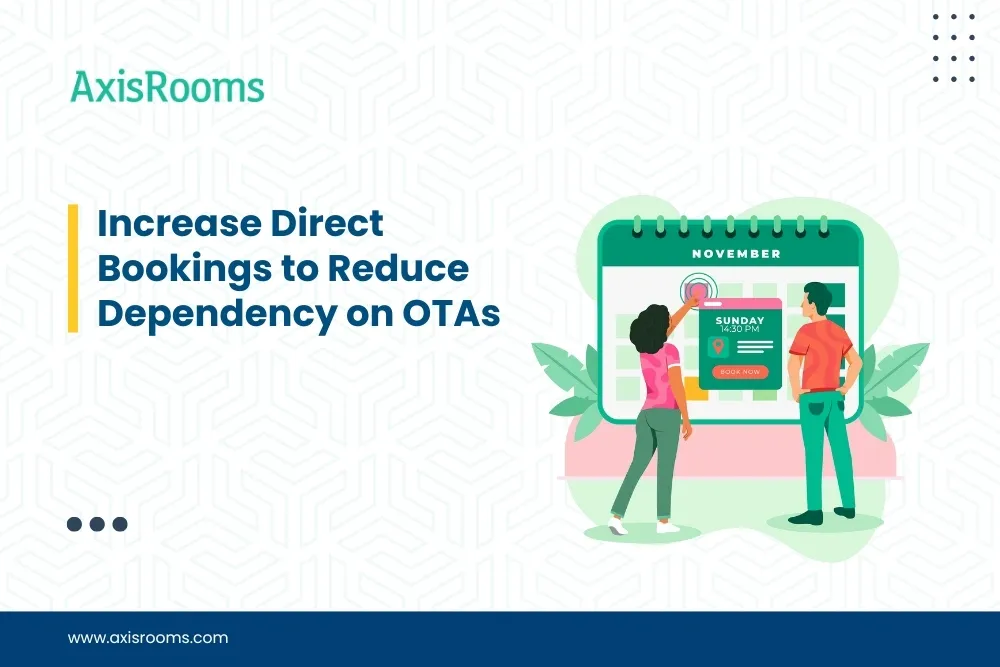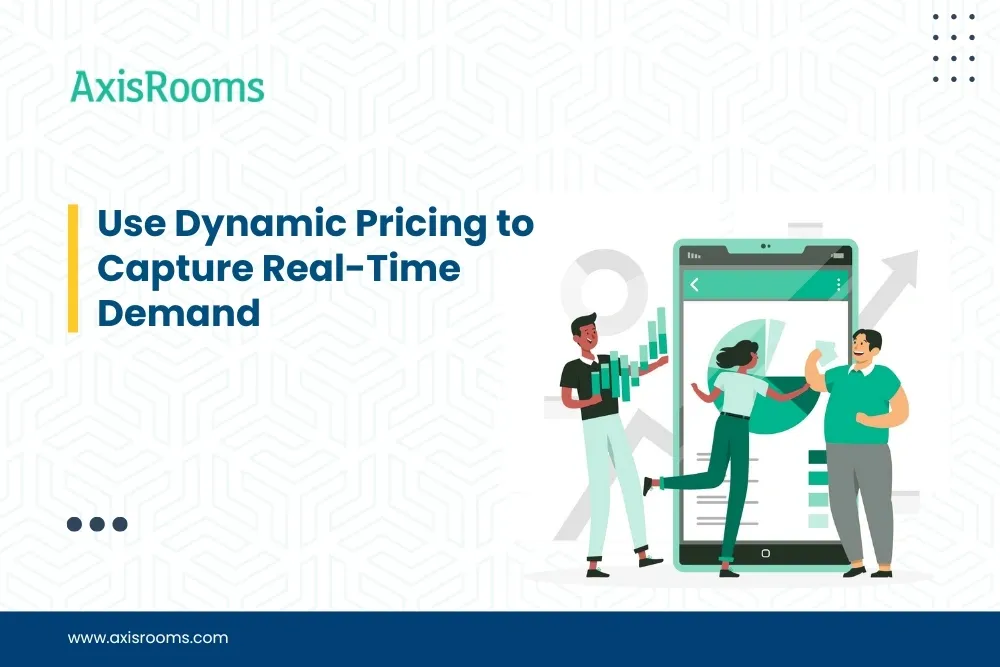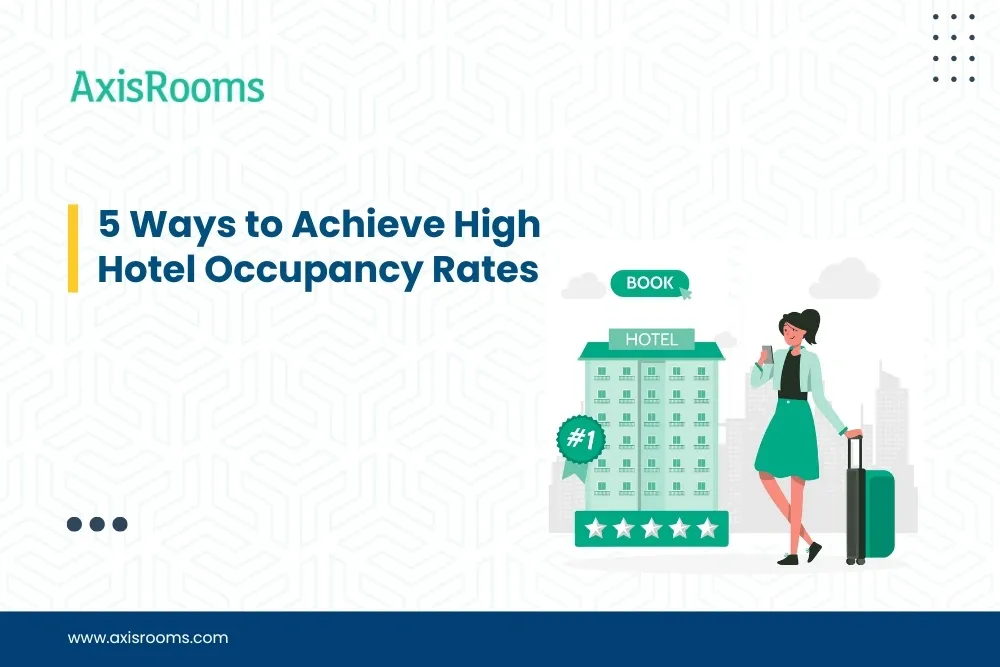Why Occupancy Still Drives Hotel Success
Occupancy rate isn’t just a number—it’s the heartbeat of your hotel’s profitability. For hoteliers, maintaining a high occupancy rate means maximizing fixed costs, ensuring staff productivity, and driving consistent cash flow. Yet many properties struggle to keep rooms filled outside of peak seasons.
The good news? With the right strategies and tools, you can boost bookings and stabilize occupancy across the calendar year.
This blog outlines 4 proven strategies that are easy to implement, measurable in impact, and tailored to both independent hotels and mid-sized properties.
Start by Calculating Your Current Occupancy
Before jumping into solutions, it’s critical to understand your current occupancy baseline. Use this standard industry formula:
Whether you’re tracking daily, weekly, or monthly data, having a clear picture helps you set realistic targets and understand when and where you’re losing out.
Once you know your numbers, benchmark them against similar properties in your location to see how competitive your property really is.
1. Target Guests Based on Demand Cycles
One-size-fits-all marketing no longer works. Guest preferences vary based on seasonality, weekdays vs. weekends, and purpose of travel. A key driver of higher occupancy is segmenting your promotions by demand patterns.
Mid-Week Slowdown? Target:
- Business travelers and consultants
- Medical tourists visiting nearby hospitals
- Real estate agents and corporate relocations
- Attendees of trade fairs, conferences, or training programs
Action Plan:
- Launch weekday stay offers with perks like early check-in, Wi-Fi, or laundry service
- Run geo-targeted ads on Google or Facebook for local or last-minute guests
- Collaborate with local businesses to build referral programs or B2B corporate rates
Use your past occupancy data from the PMS to identify gaps and align your campaigns around them.
2. Improve OTA Visibility with a Channel Manager
Being listed on top OTAs is essential—but manually updating inventory, rates, and offers across each platform can be slow, error-prone, and risky. Delays in updates can lead to overbookings or missed opportunities.
A Channel Manager streamlines this process by connecting your hotel’s room inventory and rate plans to multiple OTAs from a single dashboard.
Table: Channel Manager Benefits for Hoteliers
By syncing your availability instantly and keeping pricing aligned with demand, you reduce errors, save hours of admin work, and increase your chances of getting booked—especially during high-traffic periods.
To further streamline operations, make sure your channel manager supports PMS integrations for real-time booking flow and room mapping accuracy across systems.
3. Increase Direct Bookings to Reduce Dependency on OTAs

Direct bookings don’t just improve profit margins by avoiding OTA commissions—they also give you full control over the guest journey and build long-term brand loyalty.
Direct Booking Essentials:
- Add a mobile-responsive booking engine to your hotel website
- Promote exclusive deals (e.g., “Get 10% off when you book direct”)
- Offer value-added services like free breakfast or airport pick-up
- Use Google Hotel Ads and SEO to rank higher in local search results
Also, make sure your booking experience is simple, fast, and multi-device compatible. A clunky checkout process can hurt conversions even if your room rates are competitive.
Tip: Track the conversion rate from your website’s “Book Now” button to identify and fix drop-off points.
Market Development: The U.S. hotel market is projected to grow from $263.21 billion in 2024 to $395.69 billion by 2030, achieving a CAGR of 7.10%. This growth presents opportunities for hotels focusing on direct booking strategies, as consumer preferences continue to shift toward premium experiences and personalized service.
4. Focus on Repeat Guests and Loyalty Building
Acquiring a new guest often costs more than reactivating a past one. Repeat guests already trust your service, understand your brand, and are more likely to return—especially if their past experience was smooth and memorable.
Tactics to Encourage Return Stays:
- Send personalized offers to past guests via email or WhatsApp
- Create a basic loyalty program (“Stay 3 nights, get 1 free”)
- Offer referral discounts for bringing in friends or family
- Leverage feedback surveys to improve stay experience and close the loop
Track repeat bookings in your PMS or CRM system to identify patterns—such as which months your loyal guests tend to return—and plan targeted campaigns accordingly.
5. Use Dynamic Pricing to Capture Real-Time Demand

Static pricing is no longer effective in a fast-paced travel market. Hotels that apply dynamic pricing strategies can react to changes in demand instantly—boosting occupancy without sacrificing profitability.
How Dynamic Pricing Works:
- Adjust room rates in real-time based on supply and demand
- Use local event calendars, competitor pricing, and booking lead time as pricing signals
- Increase rates during periods of high demand and reduce them to fill rooms during low demand
Dynamic pricing tools help optimize both occupancy and RevPAR by staying competitive without undervaluing your property.
Product Integration Tip: Many hotels use AxisRooms’ revenue management and rate optimization tools in sync with their channel manager to adjust pricing across OTAs based on booking trends, maximizing both visibility and margin.
How AxisRooms' Channel Manager Supports Higher Occupancy
That’s where the AxisRooms Channel Manager comes in.
Why Hoteliers Rely on It:
- Instant Rate & Inventory Updates: Avoid overbooking and pricing mismatches across OTAs
- Central Dashboard: Manage all listings (Booking.com, Agoda, Expedia, etc.) from one place
- Automatic Sync: Reflect availability changes within seconds across all platforms
- Detailed Reports: Track performance by channel and analyze what’s driving occupancy
By using AxisRooms’ Channel Manager as part of your broader hotel revenue strategy, you can ensure higher visibility, quicker rate adjustments, and more consistent bookings across multiple markets.
Final Thoughts: Occupancy Grows with Strategy, Not Luck
The key to achieving high hotel occupancy isn’t working harder—it’s working smarter. From optimizing your OTA presence to capturing direct bookings and building loyalty, the most successful hoteliers today combine personalized marketing with the right technology.
By implementing the above strategies—and integrating a tool like AxisRooms Channel Manager—you can maximize revenue, improve operational efficiency, and ensure your rooms are booked more consistently throughout the year.
Case Study: San Francisco Market Recovery: Among the Top 25 Markets in the U.S., San Francisco/San Mateo demonstrated remarkable growth in April 2025, with occupancy increasing by 14.0% to reach 69.6%, ADR growing by 20.5% to $227.44, and RevPAR surging by 37.4% to $158.36. This recovery showcases how targeted strategies can dramatically improve performance metrics even in previously challenging markets.


